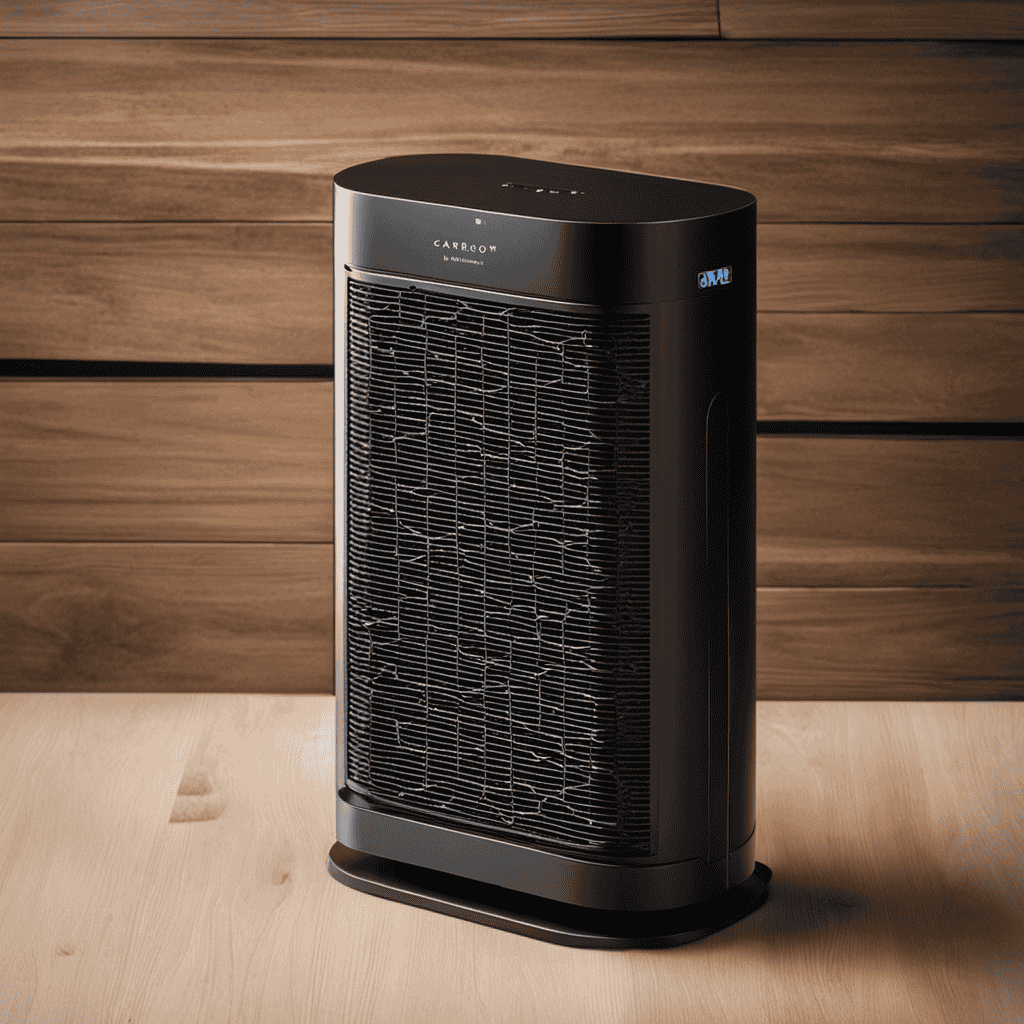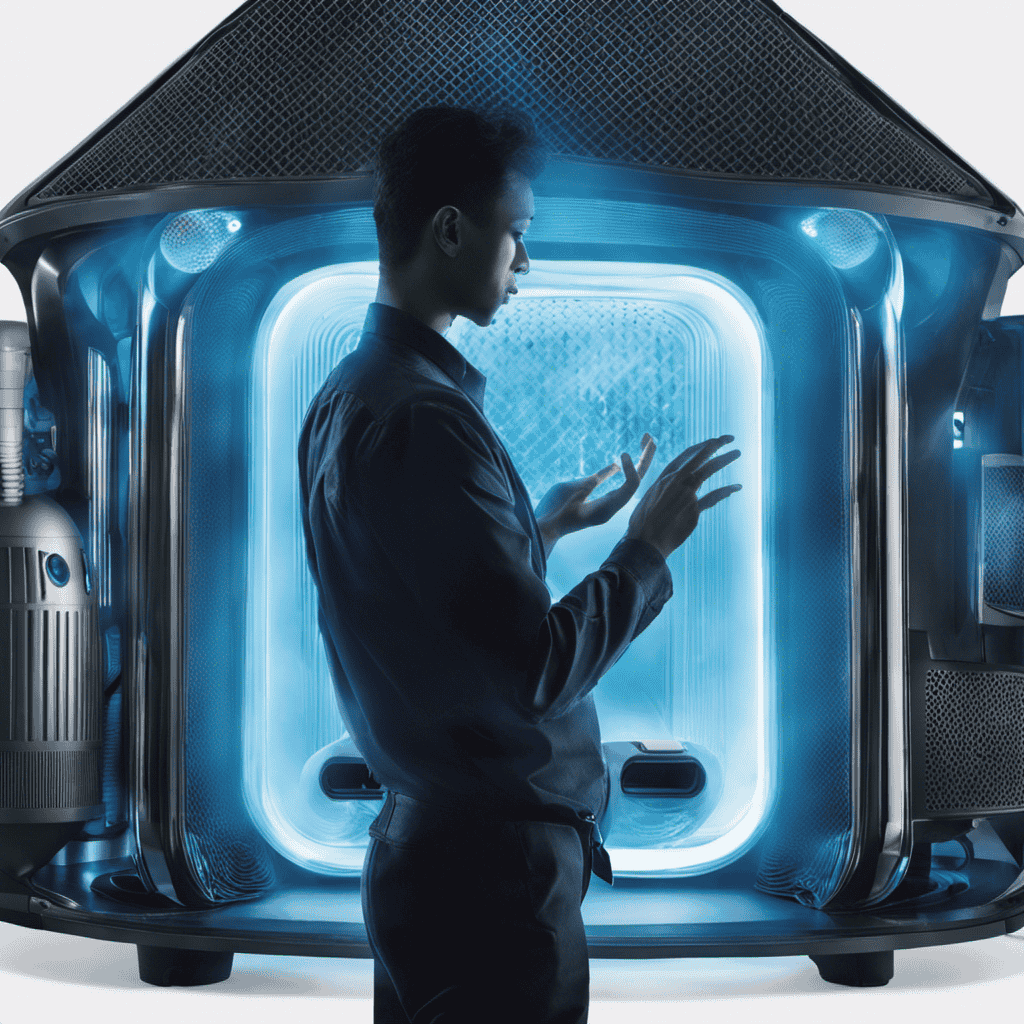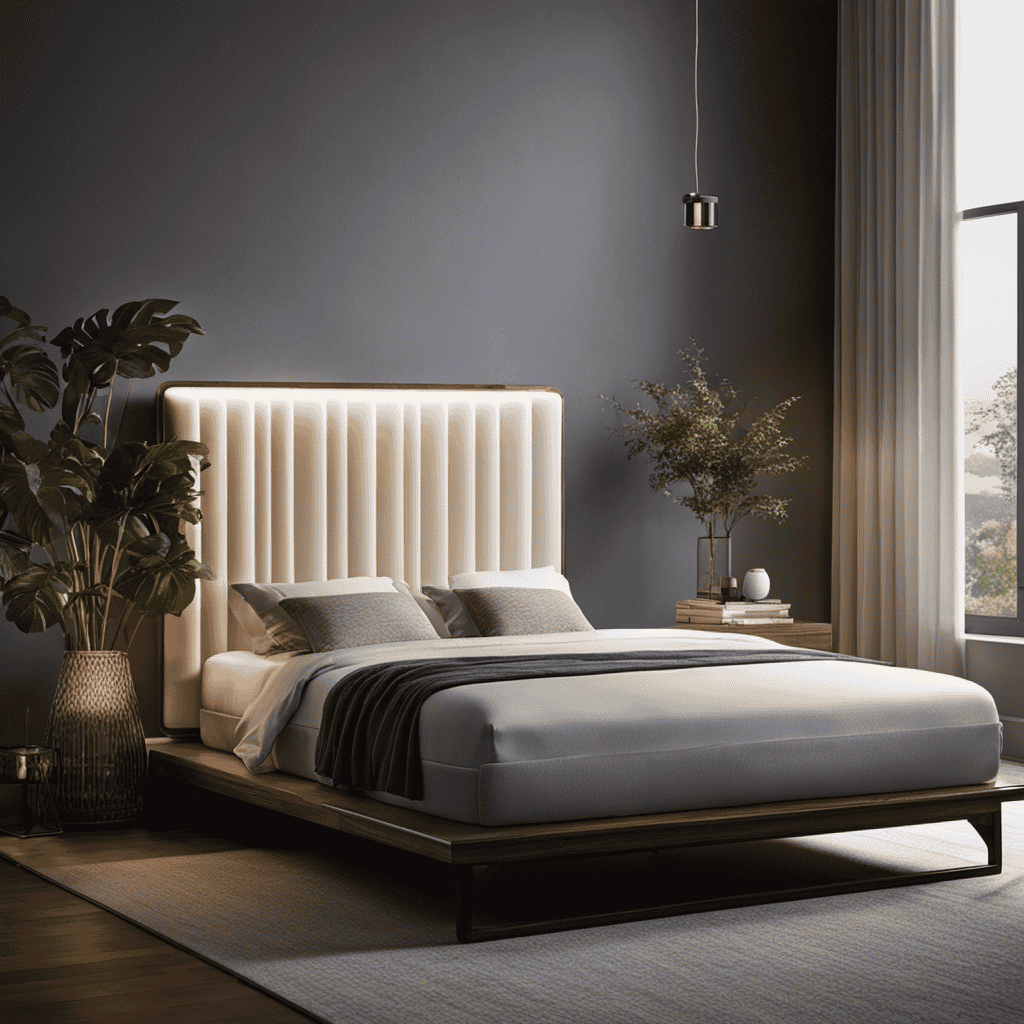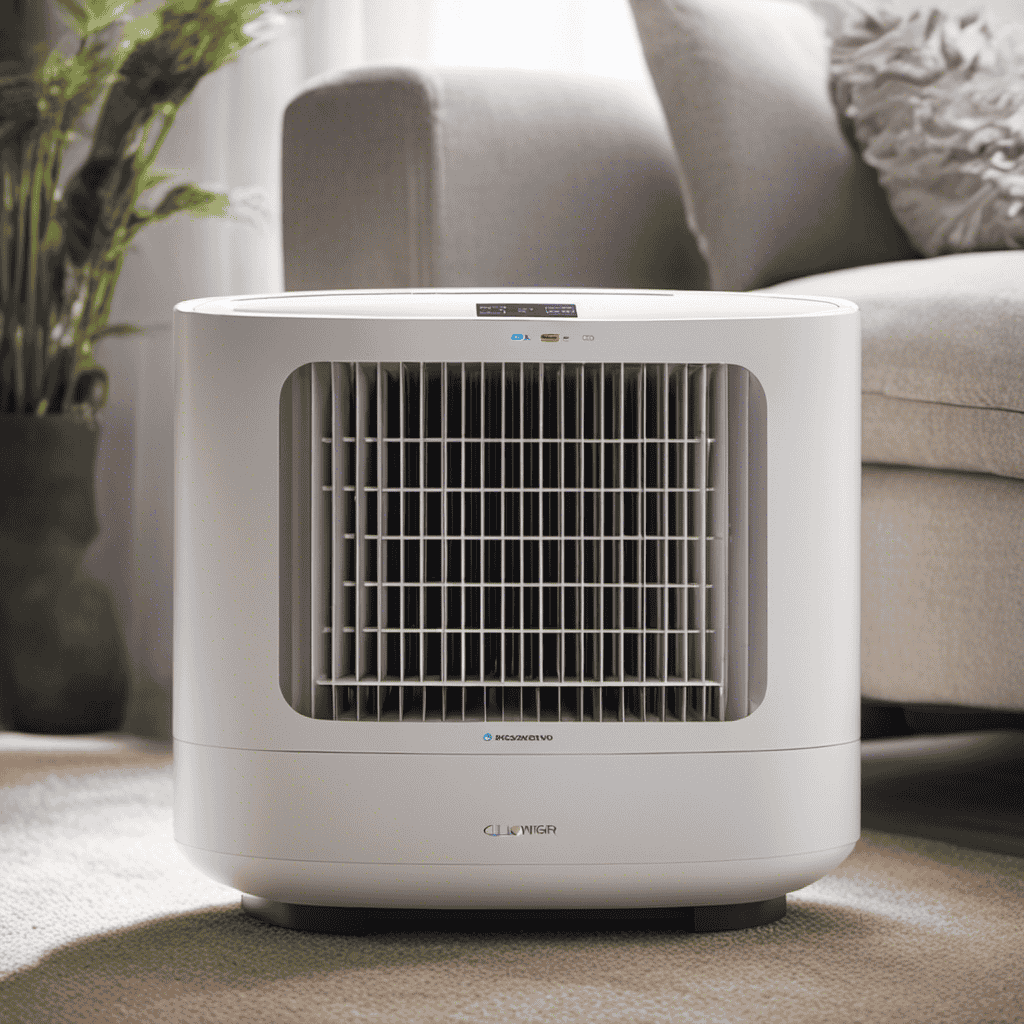Ever been curious about crafting your own carbon filter air purifier? Search no more, as I’m here to walk you through each step of the process.
In this article, I will show you how to:
- Gather the necessary materials
- Prepare the carbon filter
- Build the air purifier frame
- Assemble the purifier
- Provide tips on testing and maintaining it
Get ready to improve the air quality in your home with this detailed, scientific, and analytical DIY project.
Key Takeaways
- Carbon filters are the main component of a carbon filter air purifier.
- It’s important to compare different types of filters to choose the one that suits your needs.
- Building the frame of the air purifier can be done using wood or PVC pipes, each with its own pros and cons.
- Regular maintenance, such as vacuuming the filter and changing it every few months, is necessary for optimal performance of the air purifier.
Gathering the Necessary Materials
You’ll need a few materials to make a carbon filter air purifier. The first step is sourcing the necessary supplies.
Carbon filters are the main component of this type of air purifier, and there are different types to choose from. Activated carbon filters are the most common and effective, as they have a large surface area that can adsorb a wide range of pollutants. Another option is impregnated carbon filters, which are treated with chemicals to enhance their ability to capture specific contaminants.
It’s important to compare the different types of filters available and choose the one that best suits your needs.
Additionally, you’ll need a fan or blower to circulate the air through the filter and a sturdy container to hold everything together.
Preparing the Carbon Filter
Before starting, gather all the necessary materials for preparing the carbon filter.
Carbon filter maintenance is crucial to ensure optimal performance and longevity.
To prepare the carbon filter, begin by removing it from the air purifier and inspecting it for any signs of damage or wear. If the filter is damaged, it should be replaced immediately.
Next, gently clean the carbon filter by rinsing it with water to remove any accumulated dirt and debris. Avoid using harsh chemicals or scrubbing too vigorously, as this may damage the filter.
Once cleaned, allow the filter to air dry completely before reinstalling it in the air purifier.
When disposing of used carbon filters, it is important to follow proper guidelines for safe and environmentally-friendly disposal. Check with your local waste management facility for instructions on how to dispose of carbon filters in your area.
Building the Air Purifier Frame
Once you’ve gathered all the necessary materials, start building the frame for the air purifier. The frame provides structural support and holds all the components together. There are various building techniques you can use, depending on your preference and available resources. One popular option is using wood as it is sturdy and easily accessible. Another alternative design is using PVC pipes, which are lightweight and flexible. To help you compare these options, here is a table outlining their pros and cons:
| Material | Pros | Cons |
|---|---|---|
| Wood | – Sturdy – Easily customizable – Durable |
– Can be heavy – Requires tools for cutting and shaping |
| PVC pipes | – Lightweight – Easy to assemble – Affordable |
– Less durable – Limited customization options – May require additional support |
Consider your specific needs and budget when choosing the building technique for your air purifier frame.
Assembling the Carbon Filter Air Purifier
To start assembling the carbon filter air purifier, simply attach the frame components together using screws or adhesive. Once the frame is secure, follow these steps to complete the assembly:
- Place the activated carbon filter in the designated slot within the frame.
- Ensure that the carbon filter is properly aligned and centered for optimal air filtration.
- Attach the fan unit to the top of the frame, making sure it is securely fastened.
- Connect the power cord to the fan unit and plug it into a power source.
Troubleshooting common issues:
- If the air purifier is not turning on, check the power connection and ensure that the fan unit is securely attached.
- If there is a decrease in air flow, clean or replace the carbon filter as needed.
Optimizing air flow:
- Position the air purifier in a central location within the room to ensure maximum coverage.
- Avoid placing the air purifier near obstructions or in corners, as this can hinder air flow.
Testing and Maintaining the Air Purifier
After you have completed the assembly, it is important to regularly test and maintain the air purifier for optimal performance. To ensure that your carbon filter air purifier is working effectively, there are a few cleaning methods and troubleshooting tips to keep in mind. Here is a table summarizing the recommended cleaning methods and troubleshooting tips:
| Cleaning Methods | Troubleshooting Tips |
|---|---|
| Vacuuming the filter | Check power supply |
| Wiping the exterior | Replace worn-out parts |
| Changing the carbon filter | Check for clogging |
Regularly vacuuming the filter helps remove dust and debris, ensuring efficient airflow. Wiping the exterior with a damp cloth keeps the purifier looking clean and prevents dust buildup. Changing the carbon filter every few months is crucial for maintaining optimal air purification. If the purifier is not functioning properly, check the power supply and replace any worn-out parts. Additionally, ensure that there are no clogs obstructing the airflow. By following these cleaning methods and troubleshooting tips, you can ensure that your carbon filter air purifier continues to provide clean and fresh air in your space.
Frequently Asked Questions
How Long Does a Carbon Filter Typically Last Before It Needs to Be Replaced?
A carbon filter typically lasts around 6 to 12 months before it needs to be replaced. Signs of a worn-out carbon filter include reduced odor absorption and decreased air purification efficiency.
Can I Use Any Type of Activated Carbon for the Filter, or Are There Specific Recommendations?
Using the right activated carbon for air filters is crucial. There are different types, each with pros and cons. It’s important to consider factors like particle size, surface area, and adsorption capacity.
Is It Possible to Reuse the Carbon Filter by Cleaning or Washing It?
Yes, it is possible to reuse carbon filters by cleaning or washing them. However, it is important to note that this may not be as effective as using a new filter. There are also alternative filtration methods available.
How Effective Is a Carbon Filter Air Purifier in Removing Common Household Odors?
I’ve found that a carbon filter air purifier is highly effective in removing common household odors. Its ability to adsorb and trap odor-causing molecules is one of the key benefits of this technology.
Are There Any Specific Safety Precautions or Considerations to Keep in Mind When Using a Carbon Filter Air Purifier?
When using a carbon filter air purifier, it is important to consider potential health risks and follow proper carbon filter maintenance. It is crucial to ensure the safety of the air we breathe.
Conclusion
In conclusion, creating a carbon filter air purifier was a meticulous and rewarding process.
As I tested the purified air, a sense of relief washed over me, knowing that my creation was effectively removing harmful particles and odors from the environment.
The intricate framework and precisely prepared carbon filter worked seamlessly together, providing a clean and fresh atmosphere.
Maintaining this purifier will ensure a constant flow of purified air, protecting the health and well-being of all who breathe it in.










